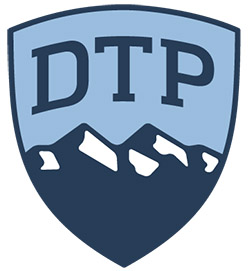Colorado’s Best Algebra and Algebra II Tutors.
Denver Test Prep algebra tutors help students to excel in Pre-Algebra, Algebra I, and Algebra II. For younger students, our focus is on building a strong foundation of basic algebra concepts including algebraic expressions, exponents, functions, and statistics and probability. For more advanced students, we focus on linear and quadratic functions, equations, coordinate geometry, slope, inequalities in one variable, rational expressions and equations, radical expressions and equations, conics, systems of linear and quadratic equations and inequalities, and logarithmic and exponential functions. Students will learn to apply these concepts to real world situations through word problems and tutors place a heavy emphasis on helping students to build clear and well organized systems to visually show their work and self-correct when errors are made.

Algebra concepts covered on the SAT and ACT
In addition to helping our students succeed in their high school algebra course, Denver Test Prep algebra tutors help students to master the skills necessary to be successful on the SAT and ACT. A sample list of algebra concepts that are consistently tested on the SAT and/or ACT are copied below.
- Quadratic equations
- Equations of lines
- Radical and rational equations
- Direct and inverse variation
- Absolute value
- Systems of equations
- Equations of circles and other shapes
- Substitution
- Simplifying expressions
- Word problems involving algebraic expressions
Key algebra terms and concepts
Understanding the language of algebra is crucial for all motivated algebra students! While the list below is far from comprehensive, it serves as a starting point for students studying algebra in middle school and high school.
- Absolute Value: A number’s distance from zero (0) on a number line. The absolute value of both 3 and -3 is equal to 3. Absolute value is shown with two vertical lines. Example: |4|
- Commutative Property: The order in which two numbers are added or multiplied does not change their sum or product (e.g., 5 + 8 = 8 +3 or 6 x 7 = 7 x 6).
- Distributive Property: For any real numbers a, b, and x, x(a + b) = ax + bx.
- Equivalent Expressions: Expressions that have the same value but are presented in a different format or order. For example, y=2x+4 is equivalent to y=2(x+2)
- Factor: A integer or expression that when multiplied by another number goes evenly into a larger number. For example, the following numbers are all factors of the number 24: 1, 2, 3, 4, 6, 8, 12, 24
- Function: The relationship between two sets of numbers in which each element of one set has one assigned element in the other set. While there are many types and formats of functions, an example of a basic linear function would be f(x)=2x+3
- Mean: The average of a set of numbers. To calculate the mean, add up all the numbers in the set and divide by the number of items in the set.
- Median: The middle number in a data set when the numbers are lined up from smallest to largest. If there are an even number of items in the data set, the average of the middle two numbers will produce the median.
- Mode: The most common number in a data set. For example, 4 is the mode of the following data set: 1, 2, 4, 4, 5, 8, 9
- Multiple: The numbers that are produced by multiplying a given number by the set of whole numbers. For example, the multiples of the number 5 are 5, 10, 15, 20, 25, 30, 35, 40, 45, 50……
- Range: The difference between the biggest and smallest numbers in a data set. The range is 5 for the following data set: 2, 3, 3, 5, 6, 7
“I really liked that my tutor helped me to develop my own pace, but challenged me to increase my stamina in answering questions. In a sense, my tutor helped me feel comfortable with myself when prepping, which in turn helped relieve the nervousness that I often feel when taking tests and ultimately resulted in an improved overall score.”

